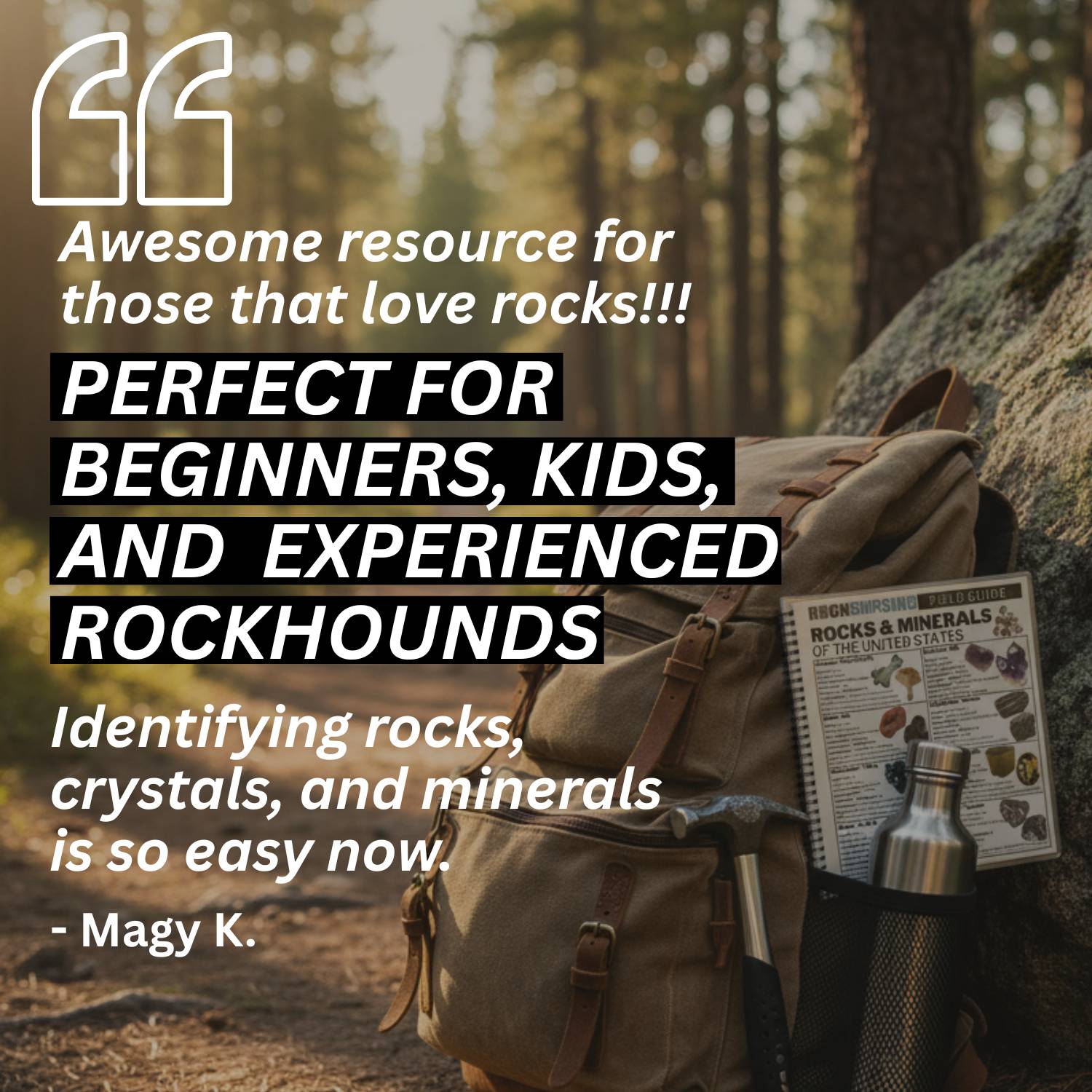If you want to find agates in Utah you’re in luck. This state is home to a magnificent variety of agates that appear in places as open as desert ground and as confined as narrow washes. The vast range of environments means that every outing feels like a new adventure with its own set of challenges and rewards.
Shallow channels and dry streambeds are excellent places to begin, as they tend to carry stones into view after storms. Other agates are found hiding among debris on rocky stretches until a glint of light gives them away. Even quiet, unassuming hillsides can hold gems if you know where to look.
We’ll point you to the Utah areas that are most likely to reward a closer search. When you know what features to focus on and where to spend your time, you’ll be in a much better position to bring home agates worth keeping.
What is Utah Agate?
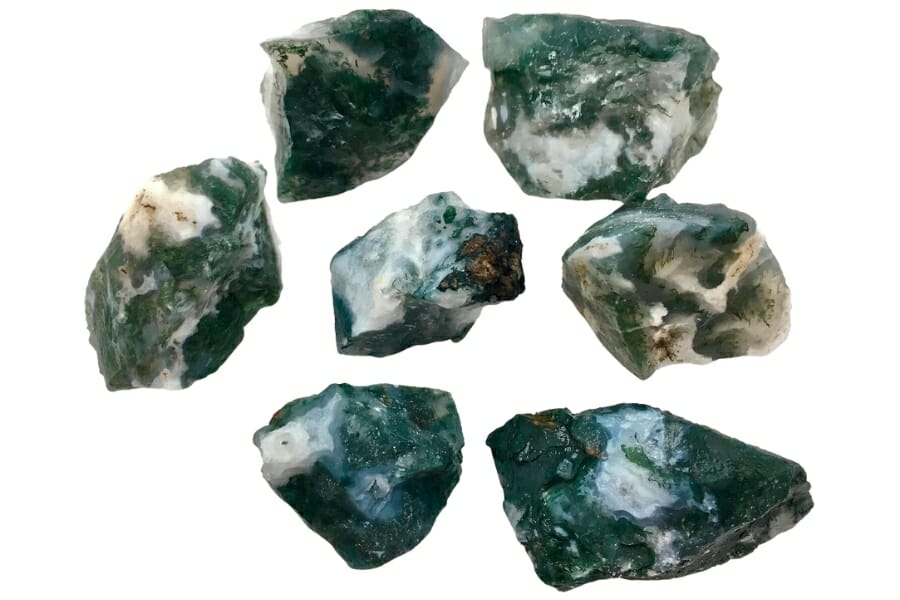
Agates are known for their beautiful, wavy patterns and bright colors. They’re a kind of quartz, and inside them, you can find a mix of colors. Some say they look like layers of a yummy cake!
These wonders form in a hollow space in a rock. Over time, tiny minerals seep into this space and slowly layer up, one by one. These layers harden and, voila, you get an agate! Its captivating beauty and versatility raise agate’s value and worth in the market.
These gems love to hide in volcanic rocks and areas where there have been lots of geological changes. They can be found in many places around the world: from beaches to deserts to mountains. The best part? You can find them right here in the USA, including in Utah!
Now, before we answer your question on where to mine for agate in Utah, let’s first go through its different kinds:
Blue Lace Agate
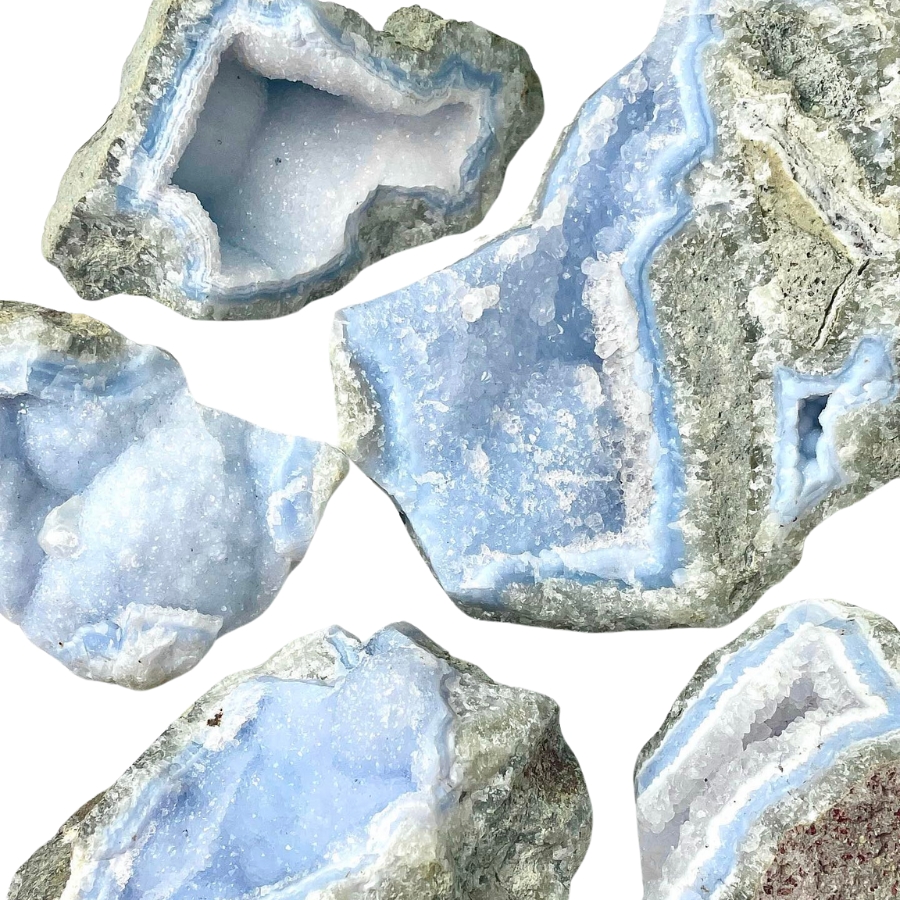
Blue lace agate is like the soft, sky-blue waves with lines that swirl and twist like delicate lace.
Its pattern comes from slow-forming layers of quartz, which create those beautiful, lace-like bands.
The bands of this agate type are often in shades of light blue, white, and sometimes a bit of grey. It’s different from other agates, which usually have more intense colors and stronger patterns.
The value of blue lace agate lies in its soft, tranquil look and the feeling of calm it brings. It’s often used in jewelry or as a decorative stone.
Moss Agate

Instead of having the typical banding for which the different types of agates are known, moss agate has green inclusions that look like moss or trees.
These green patterns aren’t real plant material, though. They’re minerals like chlorite or iron oxide.
In some cultures, this type of agate is known as the “gardener’s stone” because of its green, plant-like appearance. It’s believed to help plants grow.
The price of moss agate can vary. It’s often quite affordable, but the more distinct and picturesque the green patterns, the more it might cost.
Fire Agate
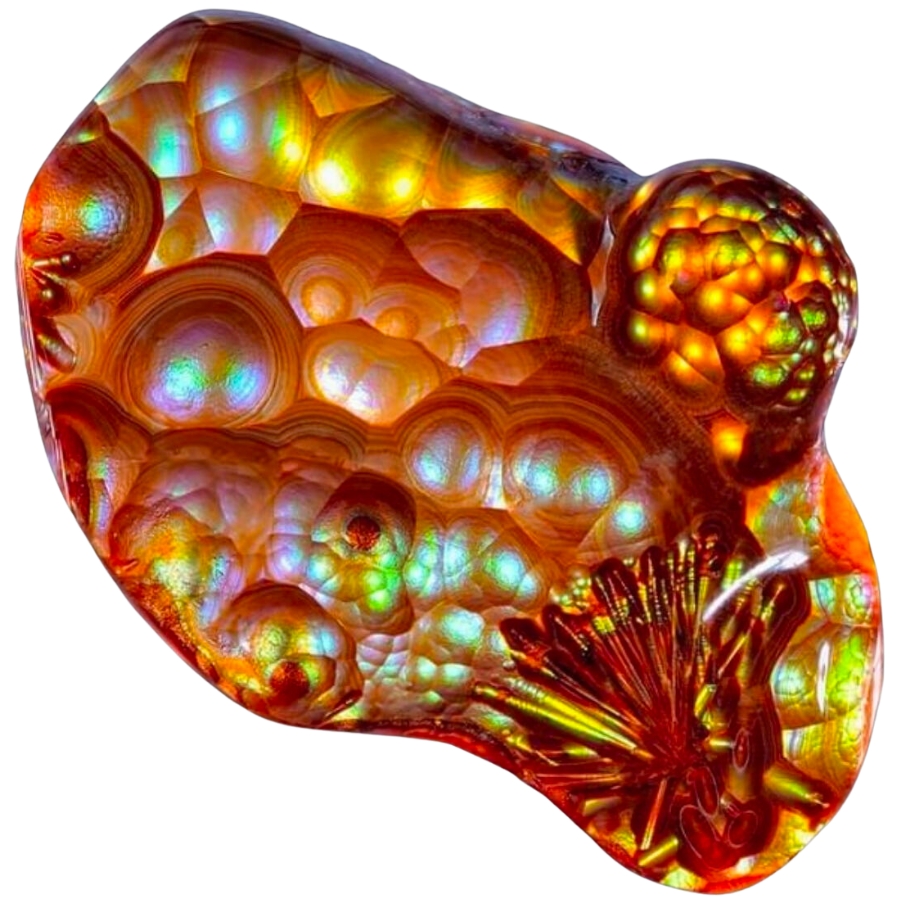
Fire agate is known for its incredible colors and the way it sparkles like fire. It’s got layers of silica and iron oxide that reflect light, creating a fiery effect.
When you look at fire agate, it’s like seeing flames trapped inside. Its colors can range from reds and oranges to greens and golds, all shimmering under the surface.
You might be wondering, “What is fire agate worth?” Well, its value comes from its rare beauty. The more color and sparkle, the more valuable the stone is.
Its fiery iridescence and lively play of color are used in jewelry pieces that are meant to stand out.
Dendritic Agate
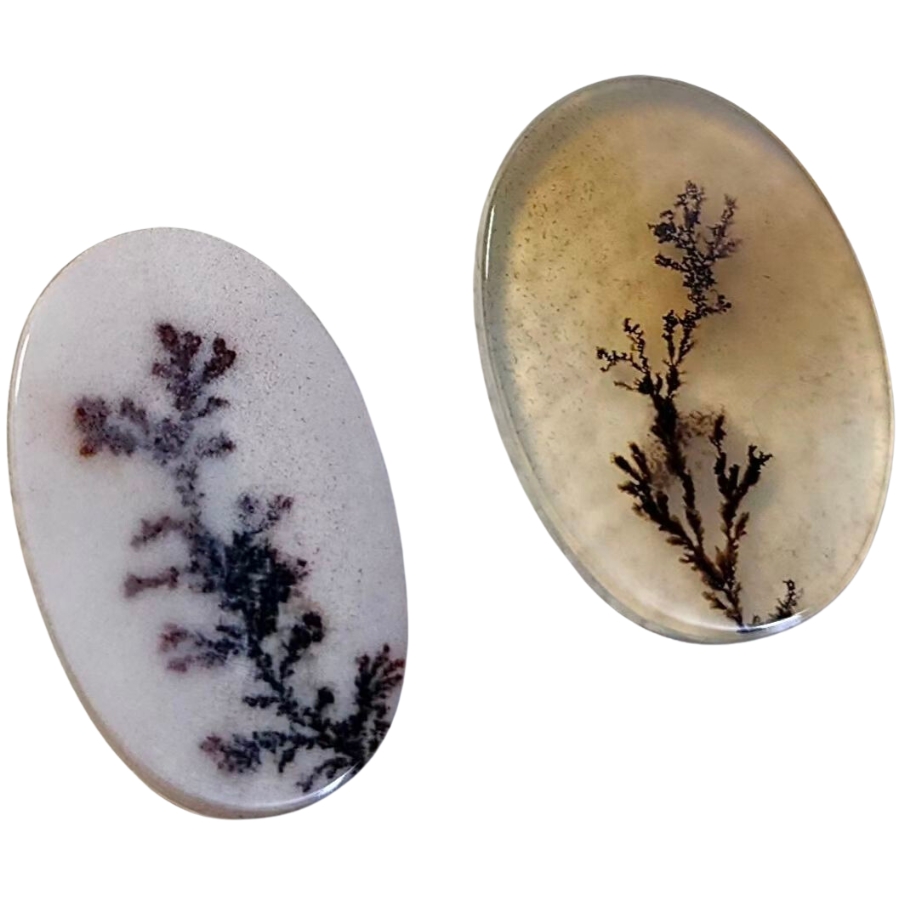
Dendritic agate is known for patterns that look like tiny trees or shrubs. Like moss agate, these patterns aren’t actual plants. They’re made of minerals, mostly manganese or iron oxides.
When you look at a dendritic agate, it’s like peering into a miniature forest or a frosty winter landscape.
The base of the stone is usually translucent to opaque, and the “dendrites”— those tree-like patterns— are often black or brown.
When it comes to how much dendritic agate is worth, it can vary. The more detailed and distinct the patterns are, the more it’s usually valued.
In some cultures, dendritic agate is believed to bring fullness and richness to life.
Crazy Lace Agate
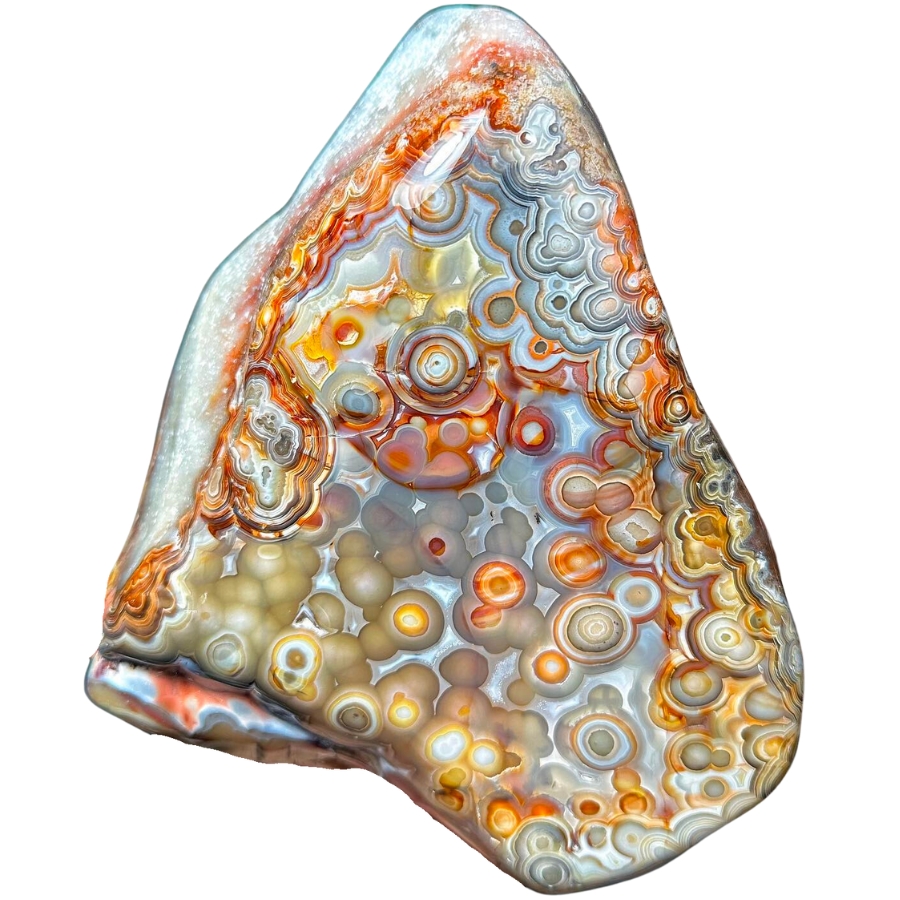
Crazy lace agate is like a party in a rock! It’s got swirls, circles, and all sorts of wild patterns dancing across it.
Its colors can be a mix of red, orange, yellow, and brown, and sometimes even a bit of gray or white.
What makes crazy lace agate stand out is its vibrant and complex patterns. No two pieces are the same. This distinctiveness is a big reason why it’s so valued.
Despite its wild and ‘crazy’ appearance, it’s sometimes called the “Laughter Stone” or “Happy Lace” because of the joy and positive vibes it’s believed to bring.
Laguna Agate
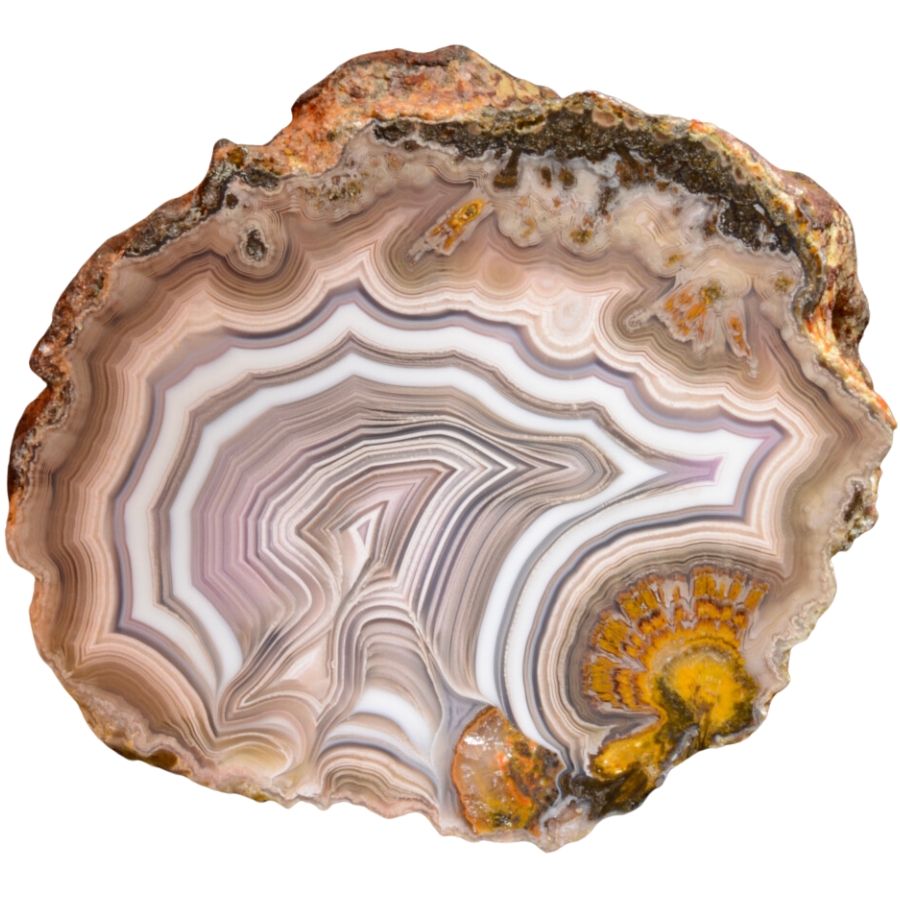
Laguna agate has incredibly sharp and fine banding. It has layers of red, orange, pink, yellow, and sometimes even purple and white all stacked in neat, tight bands.
These bands can form eye-catching patterns, like swirls, loops, and even landscapes.
The different colors of its bands come from various minerals present in the water at the time of its formation.
Laguna agate is considered one of the finest agates in the world due to its exceptional banding. This high regard among agate varieties makes it a prized possession for collectors.
Condor Agate
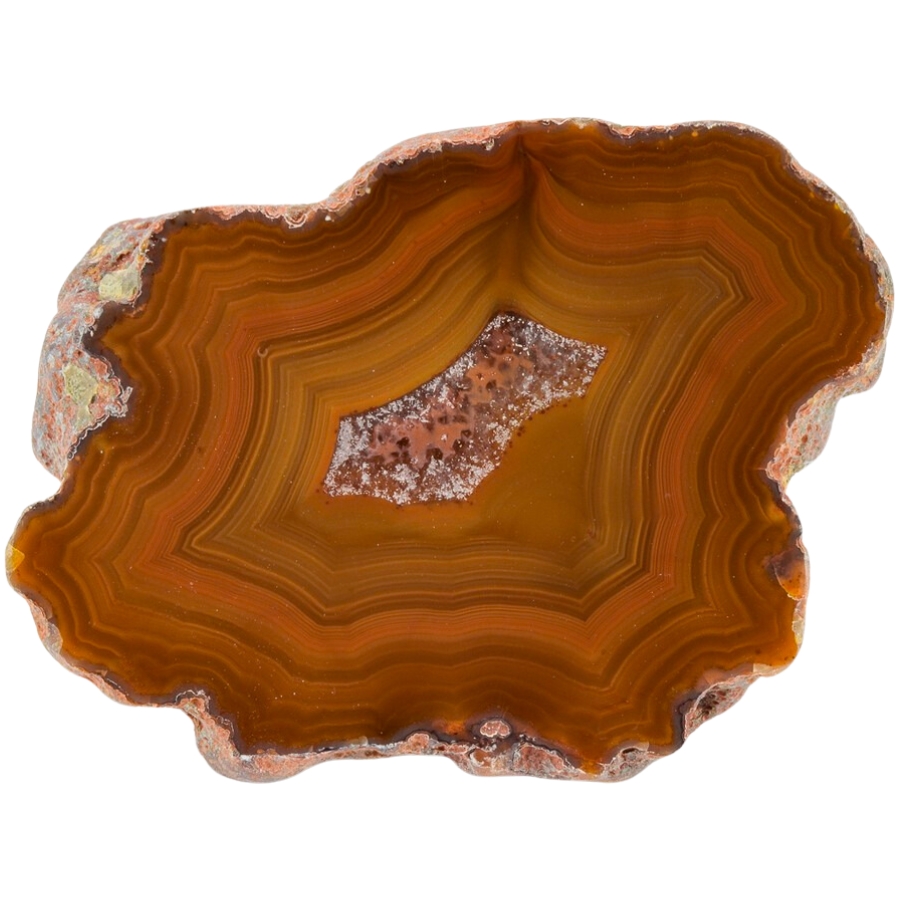
Condor agate is a real standout. It’s known for its bright, vivid colors and complex patterns.
It has reds, oranges, yellows, and sometimes even blues and greens all swirling together. These colors form in bands or in more random, artistic patterns.
The intensity and variety of its colors is what makes condor agate so special. It’s often used by artists and craftsmen who want to make a statement with their work.
Condor agate’s bold colors and patterns can turn a simple piece of jewelry or art into something really eye-catching.
Fortification Agate (Banded Agate)
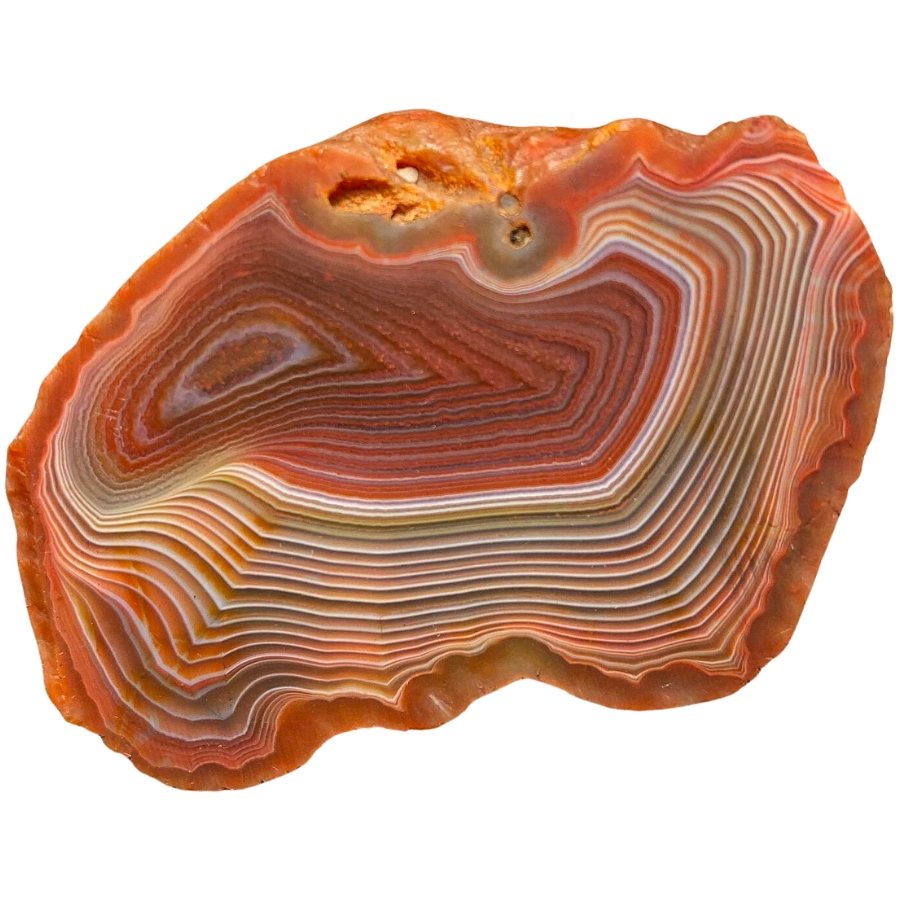
Fortification agate gets its name because the patterns inside it look like the aerial view of a fortified city.
Imagine seeing bands of color forming shapes that look like walls, with sharp angles and curves. They are usually in different colors, making each layer stand out.
If fortification agate is valuable, it’s because of its distinct patterns and colors. Its unique look makes it sought after for jewelry and as a collector’s item.
The clearer and more defined the patterns, the more valuable the stone can be. Some people also believe it can help with relaxation and calmness.
Iris Agate
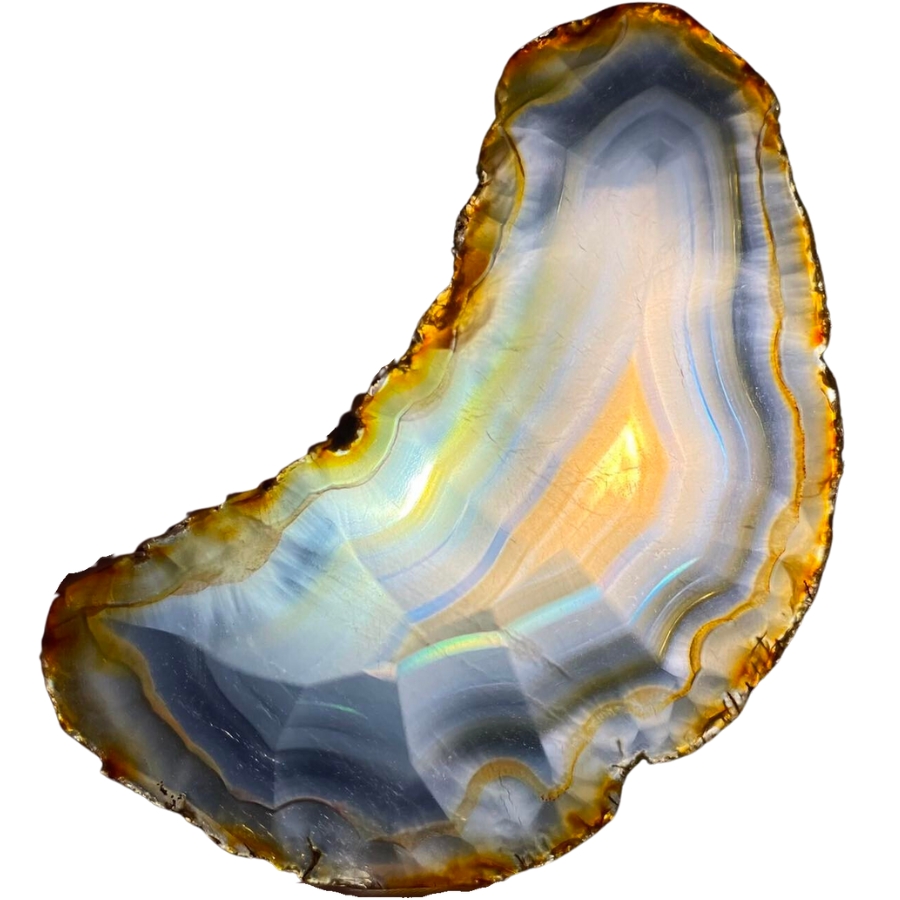
Iris agate looks like a regular agate at first, but when you hold it up to the light, something amazing happens. It shows all these rainbow colors, like light passing through a prism.
This is because it has very thin layers of silica, and when light hits these layers, it splits into all the colors of the rainbow.
The formation of iris agate is similar to other agates, but its layers are super thin, which is what creates the rainbow effect.
The value of iris agate comes from its unique ability to show these colors. In the past, people even used to think it had magical properties because of the way it showed colors. They saw it as a stone of good luck and wonder.
Plume Agate
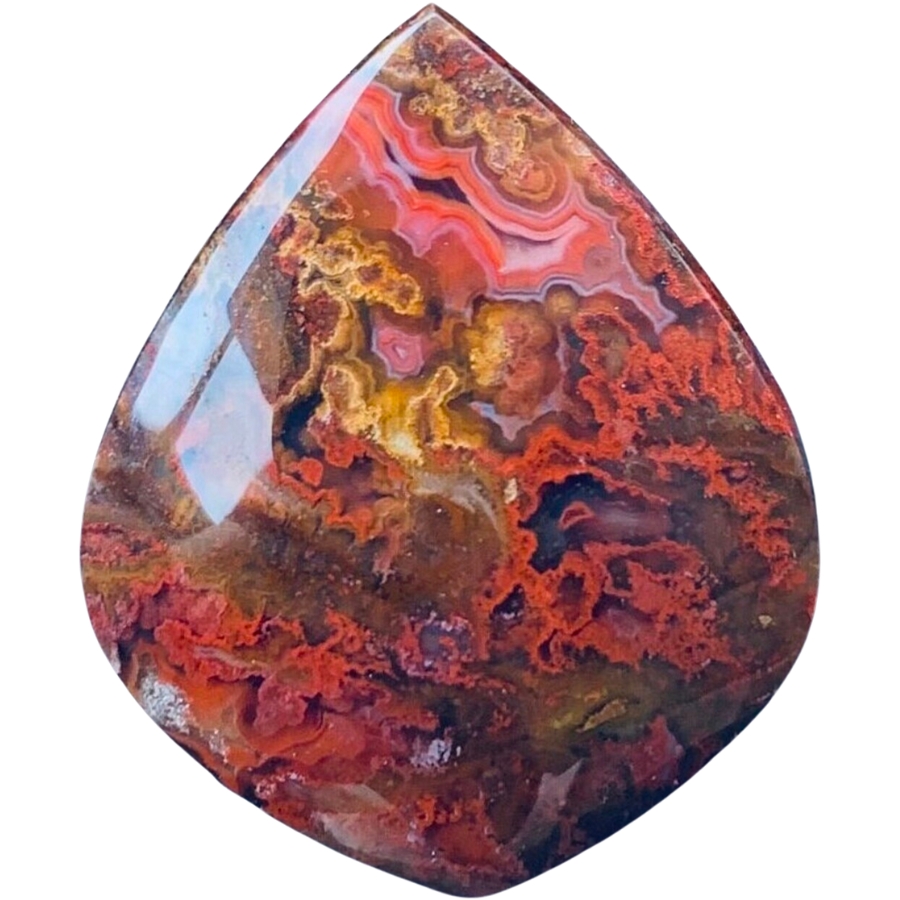
Plume agate gets its name from its patterns that look like soft, feathery plumes. These plumes can be in all sorts of colors: red, black, green, or yellow, set against a translucent or opaque background.
The way these plumes seem to float in the stone makes it look like a frozen underwater scene or like feathers caught in a breeze.
The plumes are made of minerals like manganese or iron oxide, which get trapped in the silica during the agate’s formation and create the feathery patterns.
The price of plume agate can vary depending on how clear and intricate the patterns are. The more detailed and colorful the plumes, the more the stone is usually worth.
Picture Agate (Scenic Agate)
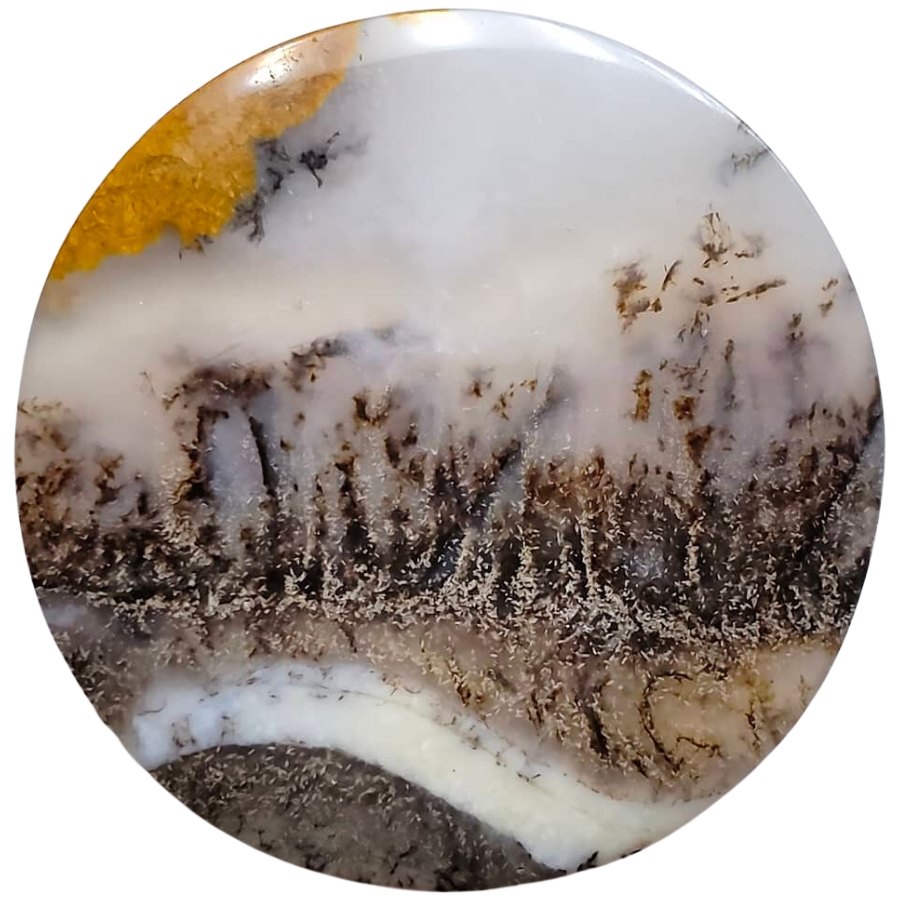
Picture agate is like a snapshot of nature captured in stone because it looks like it has pictures or scenes right inside it.
These “pictures” are actually natural patterns that resemble landscapes, mountains, trees, or even skies. They are usually in different shades of brown, white, and gray against a more translucent background.
The different patterns in picture agate or what’s also called scenic agate are made by various minerals in the water filled with silica that forms it.
If you’re thinking, “What is picture agate worth?“, its value comes from how distinct, clear, and detailed the natural “pictures” are.
Turritella Agate
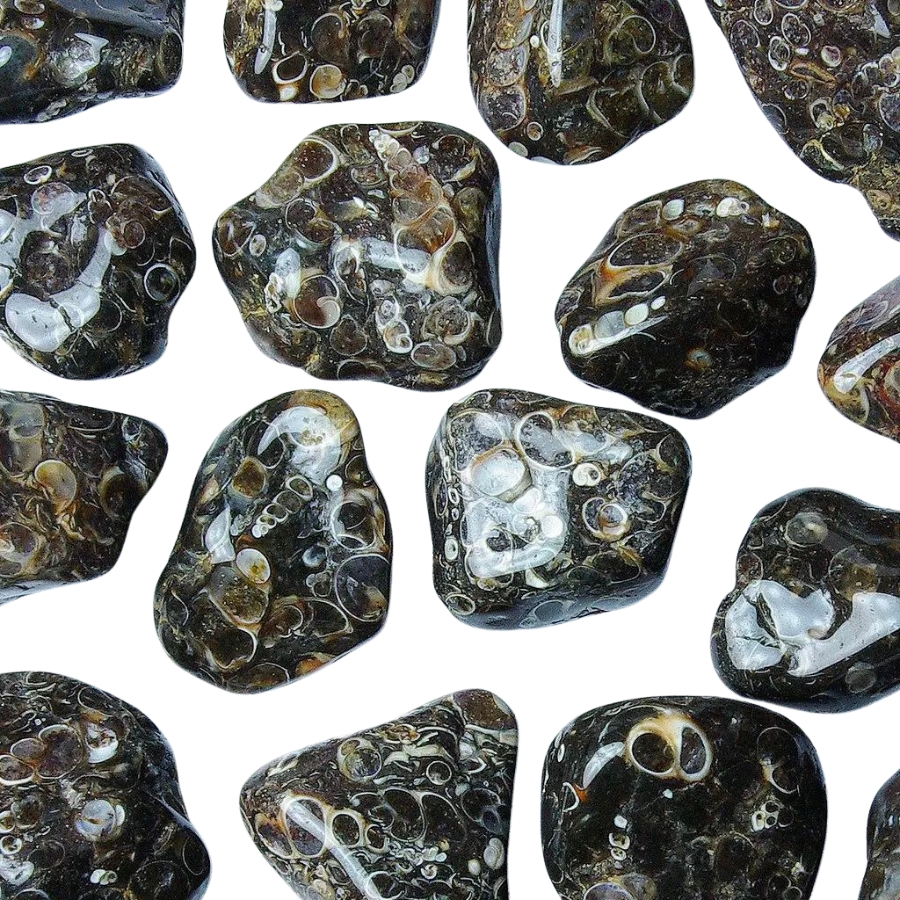
Turritella agate is not your typical agate because it’s full of fossilized snail shells! The shells belong to a creature called Turritella, a type of sea snail.
These shells are tightly packed and create a pattern that looks like a bunch of tiny, swirling towers. The background of the agate is usually a dark, earthy color, which makes the white or cream-colored snail shells really pop.
Over millions of years, these snail shells got buried in sediment and eventually became fossilized. As time went on, silica-rich water flowed through the sediment, turning it into the agate we see today.
The value of turritella agate comes from its unique blend of geology and history. More than a pretty stone, it’s a piece of ancient life preserved in rock.
Fairburn Agate
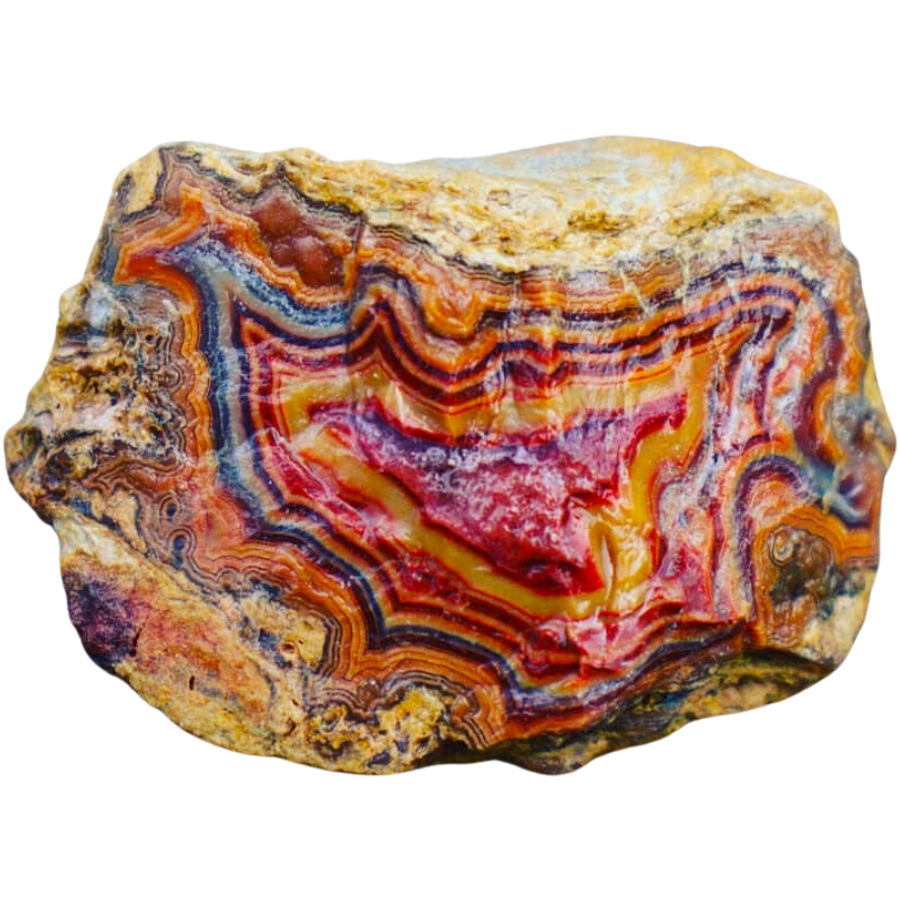
Known for its intricate patterns and bold colors, Fairburn agate is another fascinating type of agate. It usually has bands and swirls of different colors like red, yellow, orange, brown, and sometimes even pink or purple.
What’s special about these patterns is they often look like they’re in layers, creating a 3D effect. It’s like looking at a landscape made of stone.
It’s named after a place called Fairburn in South Dakota. This gives a clue about where it was first discovered.
People value Fairburn agate for the skill it takes to cut and polish it, which makes the patterns and colors really stand out.
Sagenite Agate
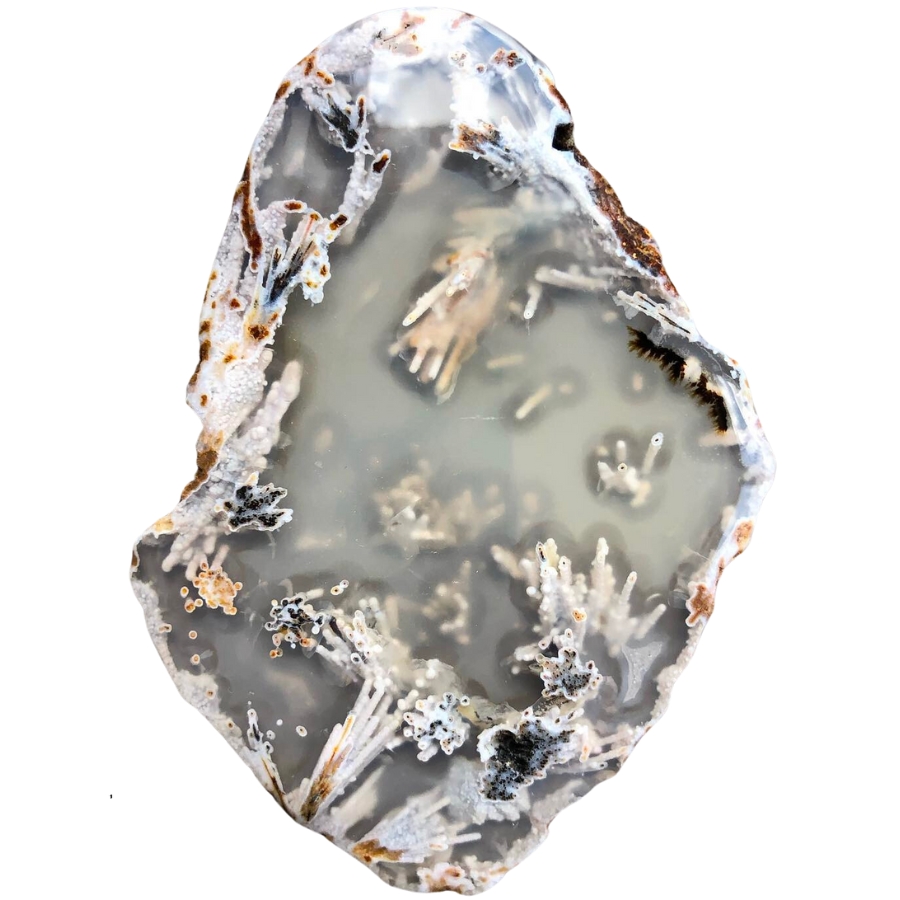
Sagenite agate has needle-like inclusions that look like tiny sprays of crystals inside it. They can be gold, silver, black, or even green, and they spread out in all directions, creating an amazing pattern.
The base of the agate is usually translucent, which lets you see these intricate needle patterns clearly.
These patterns are actually other minerals, like rutile or goethite, that get trapped inside the forming agate. These minerals grow in a crystal shape, looking like needles or hair.
Sagenite agate is often used in jewelry and other decorative items, with some people thinking that its needle patterns look like fireworks or starbursts.
Tree Agate
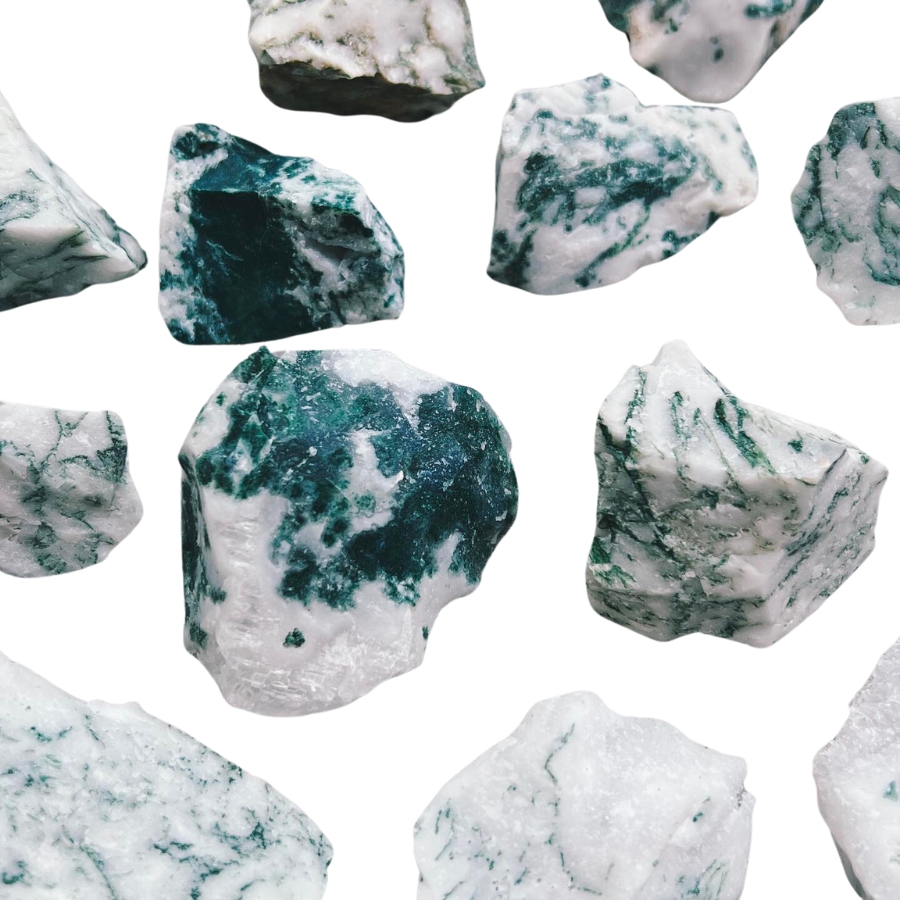
Tree agate, as its name suggests, looks like it’s got tiny trees or branches inside it. These tree-like patterns are usually green and spread out against a white or light gray background.
The green patterns aren’t actual trees, though. They’re made of minerals like chlorite or manganese.
Each piece of tree agate is different. You won’t find two that are exactly the same. It’s valued for its looks and it’s often used in jewelry and decorations.
The key factors in our recommendations are:
- The deep experience and understanding of our team about the area
- Recommendations from local groups and clubs
- How easy it is to get the a particular location
- Safety and potential hazards when collecting
- Weighing private and public locations
- The ability for both experienced and novice agate enthusiasts to find great samples
With these factors in mind we’ve been able to put together a fantastic list that just about anyone can use!
Kids. Beginners. Pros. Doesn’t matter. This book has become the go-to because it works for everyone.
Magy put it bluntly: “Identify rocks, crystals and minerals is so easy now!”
That’s not by accident, the photos are crisp, the callouts are simple, and the design is rugged enough to throw in a backpack without worrying. Whether it’s your first geode or your hundredth, this guide keeps the fun part simple: finding more treasures.
The Best Spots To Find Agates in Utah
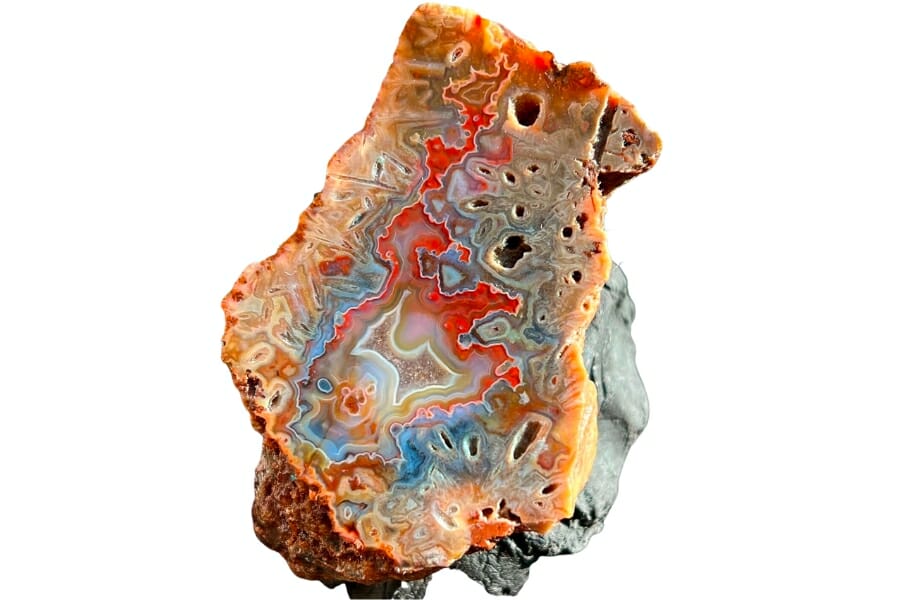
While there are many great gem mine sites in Utah, not all of them have agates. So if you really want to find them here, below are our most recommended excellent agate-bearing sites:
Always Confirm Access and Collection Rules!
Before heading out to any of the locations on our list you need to confirm access requirements and collection rules for both public and private locations directly with the location. We haven’t personally verified every location and the access requirements and collection rules often change without notice.
Many of the locations we mention will not allow collecting but are still great places for those who love to find beautiful rocks and minerals in the wild without keeping them. We also can’t guarantee you will find anything in these locations since they are constantly changing.
Always get updated information directly from the source ahead of time to ensure responsible rockhounding. If you want even more current options it’s always a good idea to contact local rock and mineral clubs and groups
Emery County
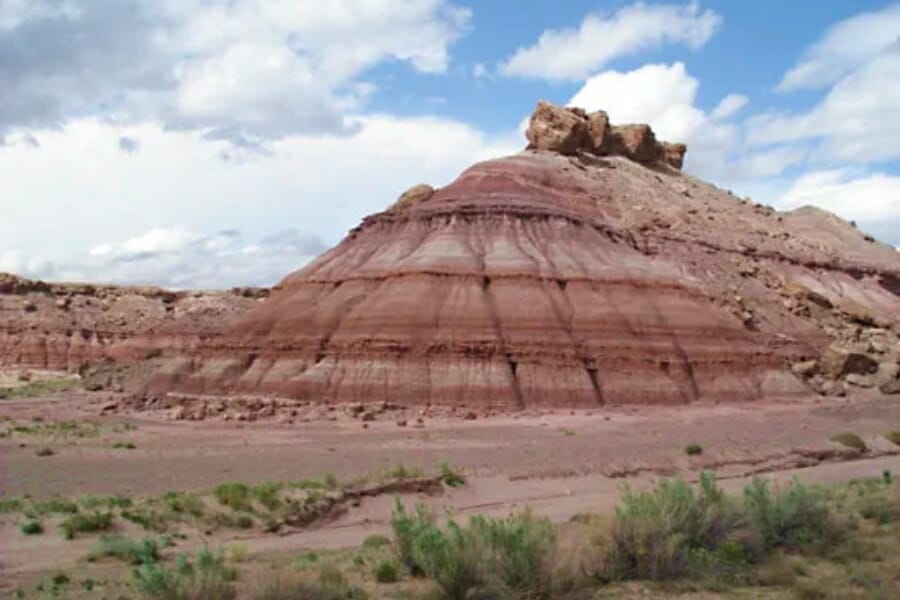
Emery County is a dream come true for nature lovers and rockhounds! Covering a vast area, it showcases a mix of deserts, plateaus, and canyons.
The San Rafael Swell, a huge dome-shaped anticline, is one of the county’s most famous geological features. With its deep canyons and unique rock formations, it’s a sight that draws many to the area.
The geology of this county is as interesting as its looks. Layers upon layers of sedimentary rock, from sandstone to shale, tell stories of ancient seas, river deltas, and vast deserts that once existed here. These layers have been sculpted over millions of years by wind and water, resulting in its stunning landscapes today.
If you’re eager to visit Emery County, you’ll be glad to know it’s quite accessible. Interstate 70 runs right through it, making it easy to reach. But before you start your trip going here, make sure to review Utah’s latest collecting guidelines.
Where we found agates in Emery County
Agates are pretty abundant in Emery County and you can find them specifically in these spots:
- Green River
- Huge fossil reef along the north side of the highway in Emery
- Morrison formation exposures
- San Rafael Swell
- Shores of the Buckhorn Reservoir
- Moore Area
San Rafael River
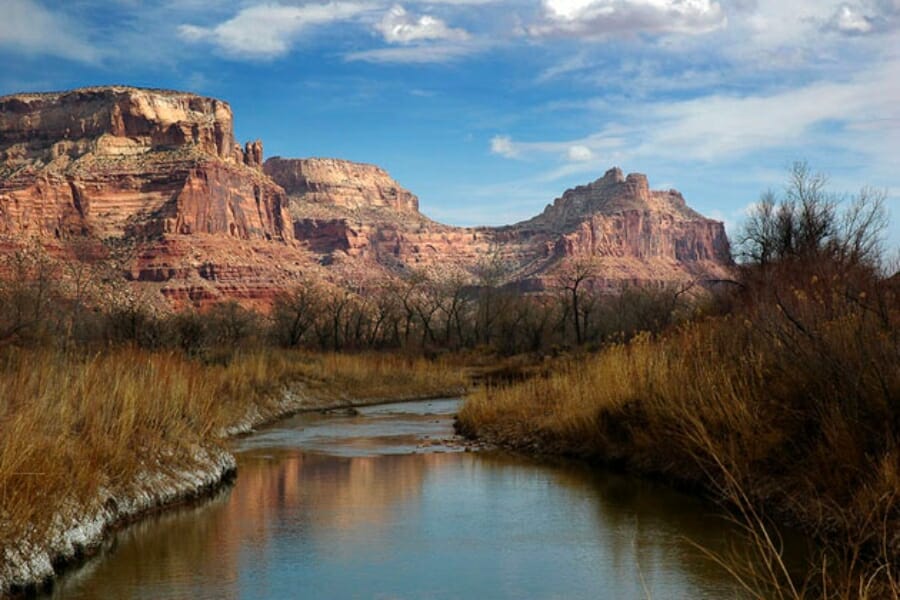
The San Rafael River is an adventurer’s paradise! Flowing through the southeastern part of our state, it carves its way through the breathtaking landscape of the San Rafael Swell.
The rock layers around the river are evidence of old oceans, deserts, and even ancient mountain ranges. Sandstone, shale, and limestone are just a few of the types of rock you’ll find here. Among them, especially near the riverbeds, you can discover beautiful agates!
Getting to the San Rafael River is part of the fun. While some areas around it can be remote, several main roads, like Interstate 70, make parts of it quite accessible.
However, if you’re planning to explore deeper or visit specific agate-hunting spots, it might require some off-road driving or hiking.
Where we found agates in the San Rafael River
You can find agates south of the highway from the San Rafael River.
Cedar Breaks National Monument
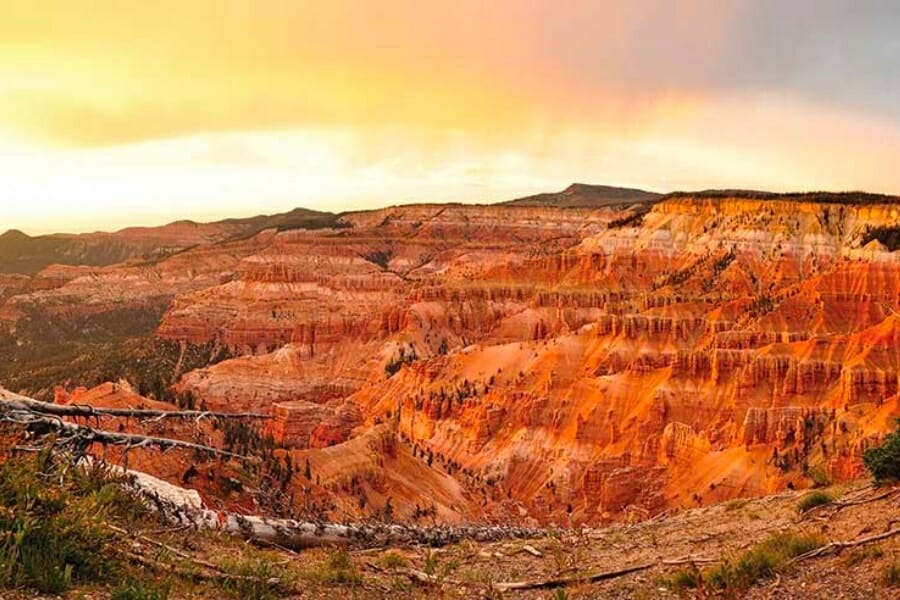
Cedar Breaks National Monument is like a natural amphitheater of colors and rock formations. Situated in the southwest, this incredible place is perched high on the Colorado Plateau, over 10,000 feet above sea level.
As you approach this excellent site to find agates in Utah, you’ll be greeted by a vast bowl-shaped depression filled with a maze of vibrant red, orange, and white stone spires, columns, and arches.
For most, getting to Cedar Breaks National Monument is a smooth journey. It’s located near the famous Highway 14, which offers a scenic drive to its main viewpoints and facilities.
However, due to its high elevation, some parts of Cedar Breaks can be covered in snow even in late spring or early fall. So, it’s always a good idea to check the weather and road conditions before heading out.
Where we found agates in Cedar Breaks National Monument
If you want to find agates, particularly banded and moss agates, you can search through all regional draws, washes, and breaks, outside the Cedar Breaks National Monument’s boundary.
Tooele County
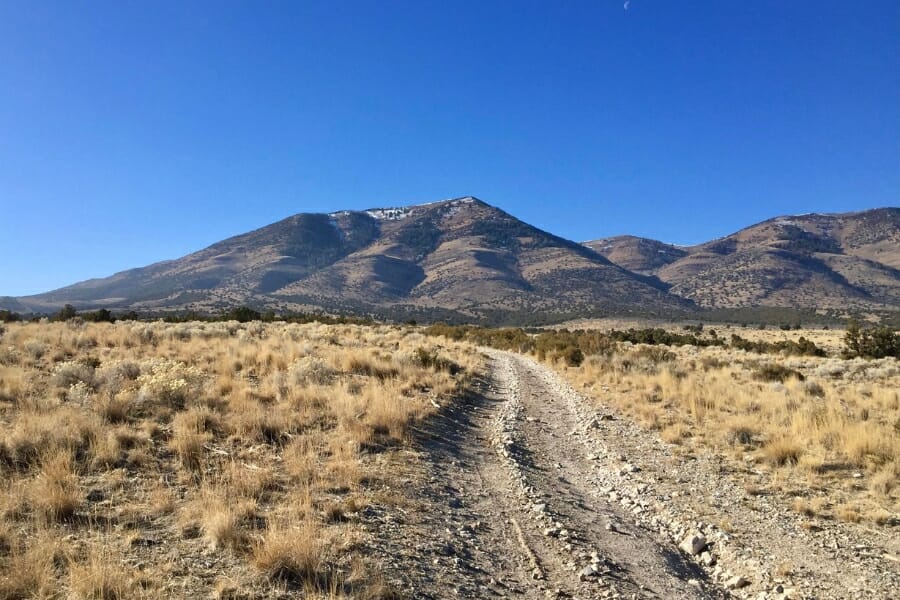
Located on the western side of our state, Tooele County is a place where mountains meet the desert, creating a mix of terrains that can make any adventurer’s heart race.
The Oquirrh Mountains stand tall on the eastern edge, while the Great Salt Lake Desert stretches out to the west. The county itself is one of Utah’s largest, so there’s plenty of ground to cover.
When we talk about the geology of Tooele County, it’s like peeking into a time machine. There are layers of rock that go way back to the time of ancient lakes, shifting sand dunes, and even volcanic eruptions.
The great thing is that going here is a breeze. Major highways, like Interstate 80, run straight through it, making the journey straightforward for most travelers.
Where we found agates in Tooele County
There are a handful of specific sites where you can find agates in Tooele County, including:
- Drum Mountains
- Clifton Mining District
- Dugway Mining District
- Cedar Mountain
- Onaqui Mountains
Sweetwater Canyon
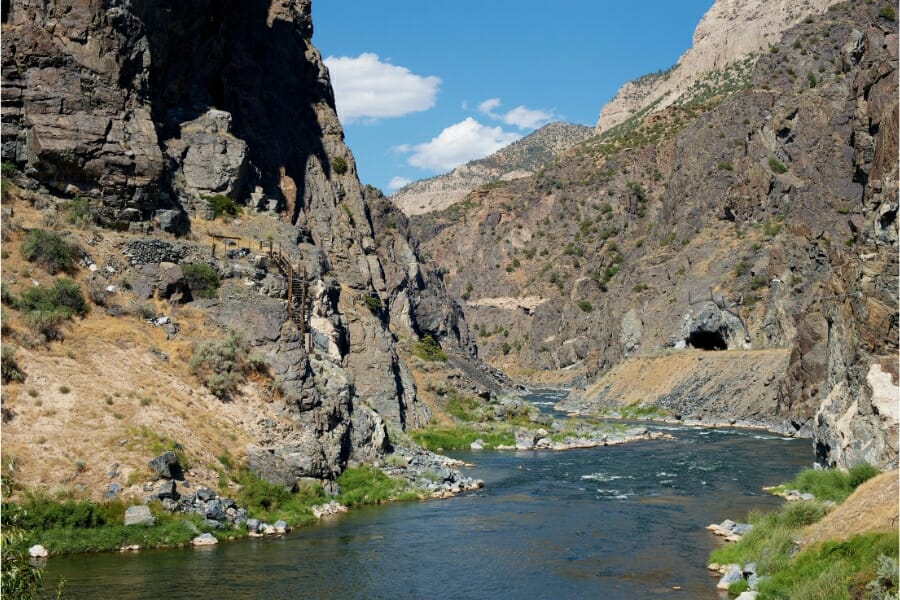
Nestled in central Utah, Sweetwater Canyon is surrounded by picturesque landscapes that paint a vivid picture of nature’s beauty. The canyon itself winds and meanders, creating pockets of green areas, rocky outcrops, and serene spots.
Geologically, Sweetwater Canyon is a treat! From ancient seas to shifting deserts, its rock layers have seen it all. Among the diverse rocks and minerals, you can find agates here.
If you’re thinking of visiting this sweet place (pun intended!), it’s relatively easy to get to. Some parts of the journey might take you on dirt roads, so it’s always good to be prepared with sturdy vehicles, especially if you’re heading off the main paths.
Where we found agates in the Sweetwater Canyon
Uncover agates in the Sweetwater Canyon by exploring its regional flats, draws, and washes.
Other Great Places To Find Agates in Utah
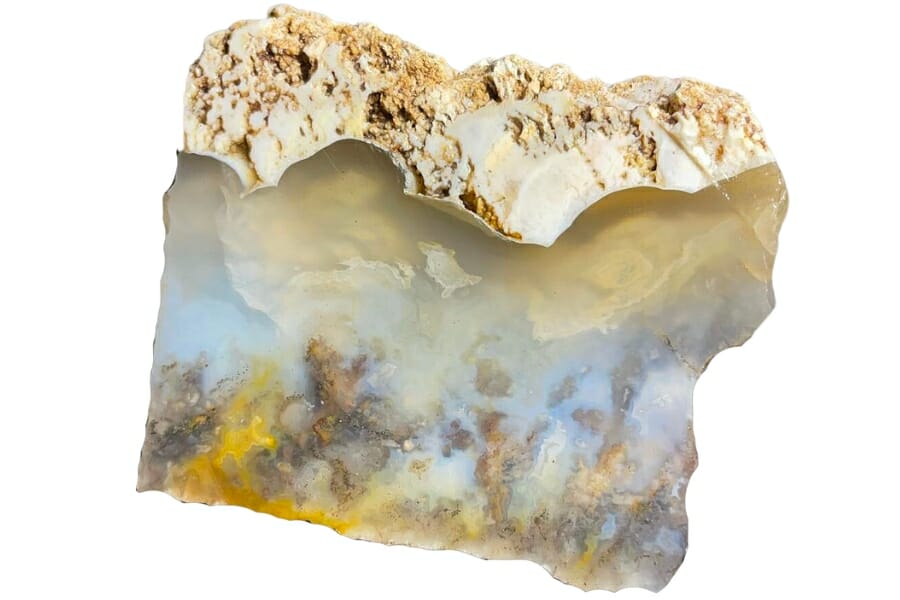
If you want to visit more excellent sites where you can find agates in Utah, we’ve listed down the other agate-bearing places here. We’ve arranged them by county for your easier reference.
Our recommendations by county
| County | Location |
| Beaver | Frisco Peak |
| Garfield | Circle Cliffs |
| Garfield | Escalante area washes, draws, and outcrops |
| Garfield | Canyons south and east in Boulder area |
| Garfield | Muley Creek and Bullfrog Creek |
| Grand | Agate Switch area surfaces |
| Grand | Colorado River |
| Grand | Cutler formation |
| Grand | Arches National Monument |
| Grand | Cactus Rat and Yellow Cat mines |
| Grand | Thompson Springs |
| Juab | Area draws, washes, surfaces of Jericho |
| Juab | Drum Mountains |
| Juab | Thomas Range |
| Kane | Wahweap Creek |
| Kane | Vermillion Cliffs |
| Kane | East Fork Virgin Creek to Alton Road |
| Millard | Salt Marsh Lake |
| San Juan | Hatch Point Road |
| San Juan | Oljeto Wash all the way to the San Juan River |
| Utah | Pinto Canyon |
| Washington | Beaver Dam Wash |
| Wayne | Hanksville |
| Wayne | Regional draws, washes, breaks, surfaces of Torrey |
| Wayne | Blue Valley |
| Wayne | Fremont River |
Additional areas you can find agates
If you’re exploring a wide area, chances are, you don’t know where exactly to start. Below are some of the usual spots where agates hide, so we highly recommend searching through them first:
Rivers and River Banks
Rivers and river banks are like nature’s conveyor belts for gemstones, including agates!
When rain falls on mountains and highlands, it washes down minerals and rocks, taking them on a journey downstream. As these rocks tumble and roll in the river, the softer parts wear away, and the tougher stones like agates get rounded and polished.
Rivers in our state are especially great for finding agates. When these stones are washed out from their original spots, rivers carry them along. Over time, they get deposited on river banks, especially in bends or areas where the water slows down.
Streams and Creeks
Streams and creeks are like little pathways, always on the move. As water flows from higher places to lower grounds, it picks up various rocks and minerals. Among these are agates, which are tougher than many other stones.
Our state has a rich geological history, packed with volcanic action and old water bodies. This means Utah has many places where agates formed over time.
When rainwater or melting snow flows down from these areas, it can bring agates into streams and creeks. And because the flow in these smaller waterways can be gentler than big rivers, agates often settle in the nooks and crannies of creeks or get caught between pebbles in streambeds.
Sediment Deposits
Sediment deposits are like natural storage units, holding onto a mix of materials that have been transported and then dropped off over time. These deposits can be made up of sand, silt, clay, and often, treasures like agates.
As waters moved through areas where agates are formed in Utah, they picked up and carried agates, later dropping them in sediment deposits, like in the basin of an old lake or at the foot of a mountain.
Common Agate-Hunting Questions
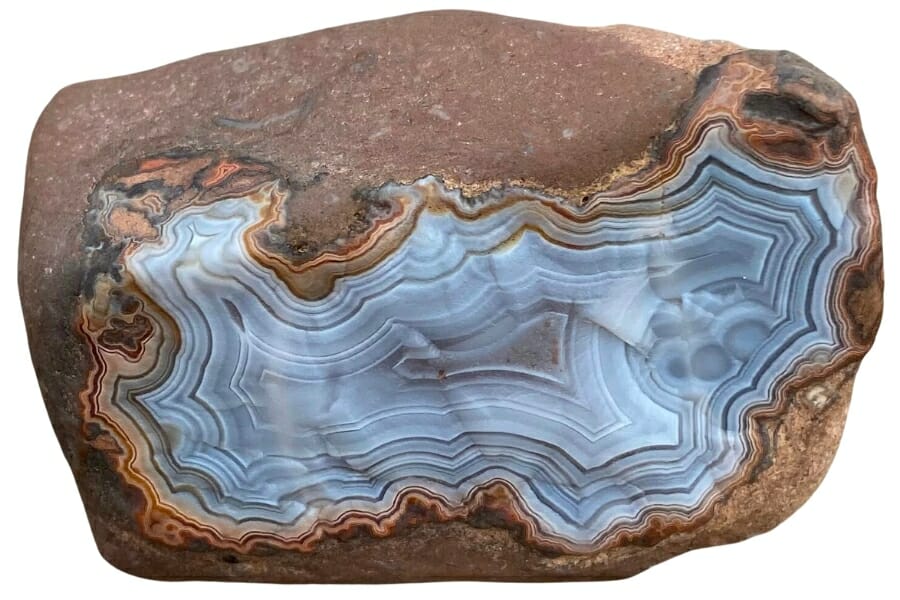
In this section, we’ll answer the most commonly-asked question when it comes to finding Utah agates.
Is it illegal to collect agate in Utah?
The good news is that collecting agates in Utah is legal, for as long as you do so in the designated collecting areas here, in compliance with our local collecting guidelines.
Be mindful and compliant also of any area-specific rules and regulations, as well as environment and safety protocols. As rockhounds, it’s our responsibility to make sure that rockhounding here remains sustainable for future generations, as well.
The Best Places To Buy Agates In Utah

While nothing beats the thrill and excitement of agate hunting, it takes time and energy before you find a specimen in its natural environment. If you don’t have much of these, you can opt to visit our local rock and mineral shops that have agates, such as:
- Bryson’s Rock Shop – 326 S Washington Blvd, Ogden, UT 84404
- Healing Mountain Crystals – 1636 S State St #A, Orem, UT 84097
- Jim’s Gems & Jewelry – 362 E 1090 N, Orem, UT 84057
- Treasures N Creations – 3419 S State St, Salt Lake City, UT 84115
- Wandering Stones – 439 S Pleasant Grove Blvd, Pleasant Grove, UT 84062
- Zion Prospector – 694 Zion Park Blvd, Springdale, UT 84767
If you have any recommendations for our list please leave a comment below!


